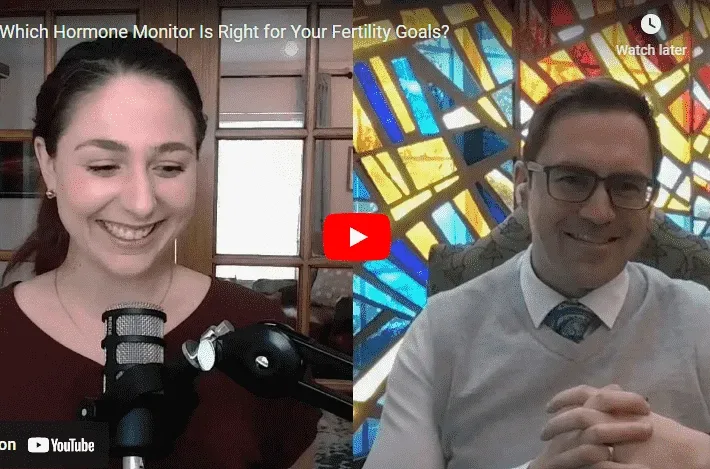Mira. Inito. Kegg. Proov. In the exploding Femtech space, there’s perhaps no greater excitement than that surrounding hormonal monitors and hormonal monitoring systems. For decades, women and couples have longed for the scientific objectivity of a simple fertility reading from a monitor, giving them a precise idea of their hormone levels (and therefore, their likelihood of conceiving) on any given day, at any given time. Historically, though, the only “techy” option fertility awareness method (FAM) users had was the ClearBlue Fertility Monitor. However, the ClearBlue monitor was designed solely to help couples get pregnant, and researchers at Marquette University cleverly “reverse-engineered” its functionality to help couples with achieving or avoiding pregnancy. But, as one can imagine, utilizing a piece of technology beyond its intended purpose can make for a somewhat clunky user-experience.
Despite this “clunkiness factor,” many couples have successfully used the Marquette Method for both avoiding and achieving pregnancy. Unsurprisingly, however, many of those same couples and others interested in Femtech options for use with their chosen FAM have long been itching for a more user-friendly device—one designed with FAM and natural family planning (NFP) in mind. Increasingly, women and couples are also seeking more detail about their hormone levels, above and beyond the qualitative readings given by the ClearBlue Fertility Monitor of ‘high’ or ‘low’ (as in ‘high’ or ‘low’ probability of conceiving). Instead, those struggling with special situations like infertility or irregular cycles, or the difficulty of interpreting fertility biomarkers during the transitional periods of postpartum and perimenopause, want quantitative data on hormone levels, similar to how a glucose monitor gives a diabetic patient a quantitative (number) reading, like 78 or 120.
Natural Womanhood recently interviewed Dr. Thomas Bouchard, a family practice doctor based out of Calgary, Alberta Canada about the latest Femtech monitors and the research supporting their use with NFP and FAMs. Dr. Bouchard is pursuing a PhD in menstrual cycle monitoring, and is keenly interested in utilizing the latest in hormone monitoring technology to benefit couples using NFP–whether they are trying to get pregnant, struggling to get pregnant, or looking to avoid pregnancy–as well as women seeking to monitor and improve their reproductive health via FAMs.
“Users are going to want to use these new technologies, to integrate them with apps, and are going to start leaving behind some more traditional markers as we’re getting these higher tech, very detailed ways of analyzing the menstrual cycle. And, let’s face it, the new generation of folks using FAMs are very interested in using technology, so we want to keep up with that,” says Dr. Bouchard.
We see the same eagerness in our readers, listeners, and followers at Natural Womanhood, and couldn’t agree more with Dr. Bouchard’s assessment. We hope you enjoy our 47-minute interview, where we discuss the answers to these NW reader questions:
- What do these fertility monitors actually measure and how do they do it?
- Which monitors are best for which women, and what type of cycles?
- Which monitors are best suited to achieving various fertility goals, whether it’s achieving or postponing pregnancy, or simply monitoring reproductive health?
- What is the difference between quantitative and qualitative hormonal monitoring, and what benefits are to be gained from having more detailed information about women’s hormones?
- How can you tell if your monitor (and the app it may be paired with) is gathering your data without you knowing about it?
- How can you get your Health Spending Account (HSA) to cover the cost of hormone monitors and supplies?
For answers to these questions and more, please tune in to our exclusive interview with Dr. Bouchard, which can be found on our YouTube channel, and below:











